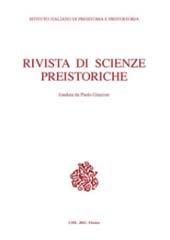La necropoli dell'età del Bronzo di Antegnate (BG)
P. 1-41
The Late Bronze Age Central Lombardy Plain is a subject of great research interest, but its cultural characteristics are still to some extent unclear. This is due to the scarcity of known contexts, both settlement and funerary, which for many years limited the possibilities of interpretation and a general archaeological synthesis. This work focuses on a small cremation cemetery investigated by the Soprintendenza per i Beni Archeologici della Lombardia in the municipality of Antegnate, province of Bergamo, during construction work on the A35 highway (BreBeMi). Represented by 14 inhumations and 4 accessory pits, the cemetery reveals aspects of great interest, both in terms of funerary ritual and material culture.
The incineration rite was carried out in well-constructed shaft tombs, filled with river pebbles, and the urn was often covered by a bowl placed upside-down. In no case were remains of metal grave goods inside the urns. The study of the bone remains, when preserved, revealed similarities with the ritual used in the Terramare culture, which involved the careful washing of human remains, separated very precisely from the pyre residuals. Another significant data is the high incidence of multiple burials, an element that seems to find comparisons in the context of European Late Bronze Age urnfields. Through the study of material culture, short- and long-distance multidirectional influences were identified in the ceramic typology of the Antegnate necropolis.
The former make it possible to identify aspects of commonality with the productions of the Scamozzina-Canegrate group to the west, and also with the Terramare area to the east, in an unprecedented framework of bi-directional contacts that had hitherto been almost impossible to identify in the archaeological record. As far as long-distance contacts are concerned, the line of connection that linked this part of the Po Valley to the urnfield culture of the middle Danube area seems clear, in a framework of mobility and exchange that fits well with recent interpretative models of the Late Bronze Age in Europe and Italy. The burial ground of Antegnate therefore allows us to take a decisive step towards the recognition of a new central Lombardy Bronze Age cultural group, and towards a better understanding of the complex framework of links and contacts that must have animated this part of northern Italy in a European and Mediterranean context. [Publisher's text]
Fait partie de
Rivista di scienze preistoriche : LXXIV, 2024-
Articles du même numéro (disponibles individuellement)
-
Informations
Code DOI : 10.32097/1222
ISSN: 2282-457X
KEYWORDS
- Età del Bronzo, Bronzo recente, Archeologia funeraria, Campi d'urne, Nord Italia
- Bronze Age, Late Bronze Age, funerary archaeology, urnfields, Northern Italy


